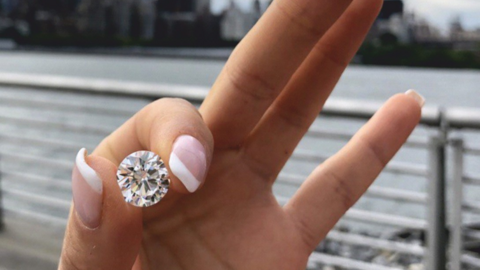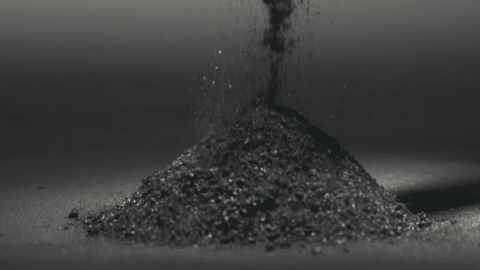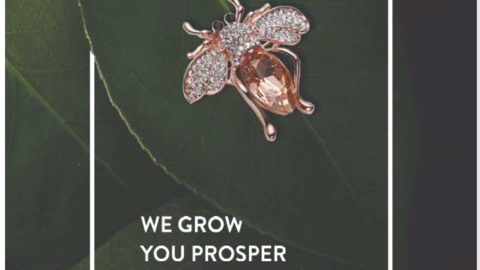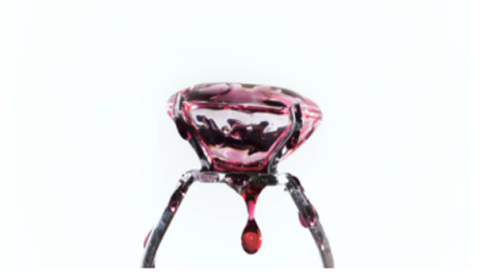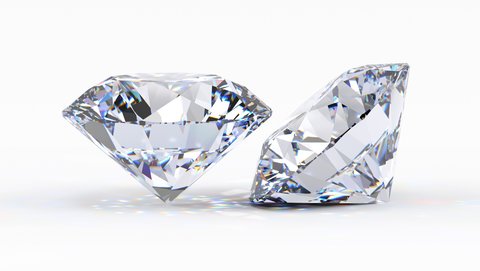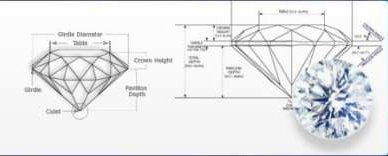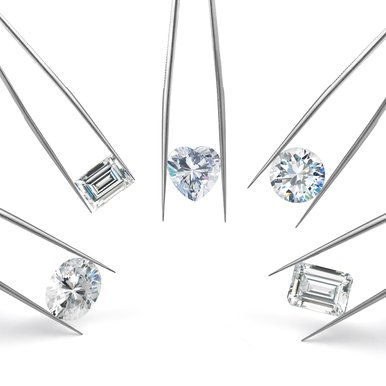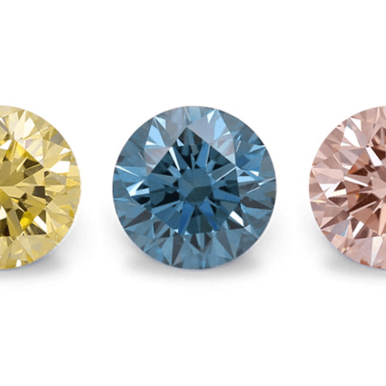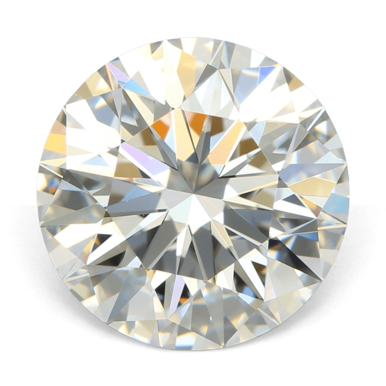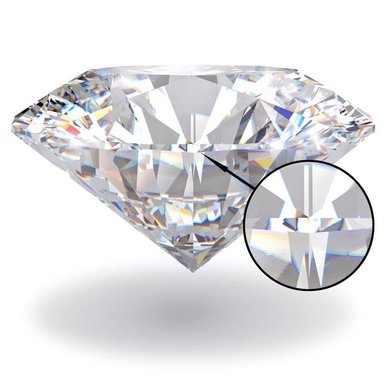The Ultimate Guide to Choosing Between Pear and Marquise Cut Lab-Grown Diamonds

Are you torn between the elegant teardrop silhouette of a pear-shaped diamond and the regal elongated brilliance of a marquise? This decision represents more than just a preference in shape—it's about finding the perfect expression of your personal style and commitment. At Labrilliante, we understand that choosing the right lab-grown diamond shape can be both exciting and overwhelming. This comprehensive guide will walk you through everything you need to know about pear and marquise cut diamonds, helping you make an informed decision that you'll treasure for a lifetime.

Royal Inspirations: The Fascinating Origins of Pear and Marquise Diamonds
The journey of these distinctive diamond cuts spans centuries, with each shape carrying a rich heritage that adds to their allure. The pear-shaped diamond, also known as the teardrop cut, first emerged in the 15th century when Flemish diamond cutter Lodewyk van Berquem pioneered the technique of absolute symmetry in diamond cutting. His revolutionary approach introduced the concept of placing facets on diamonds with perfect precision, giving birth to what would become one of history's most elegant diamond shapes.
In contrast, the marquise cut diamond boasts a more romantic origin, dating back to 18th century France. Legend has it that King Louis XV commissioned a diamond to be shaped like the lips of his beloved mistress, the Marquise de Pompadour. This regal connection has forever imbued the marquise cut with an air of aristocratic elegance and courtly romance.
Throughout history, both cuts have adorned the jewelry collections of royalty, celebrities, and discerning diamond enthusiasts who appreciate their unique characteristics. Today, at Labrilliante, we honor these historical traditions while creating these timeless shapes with modern, sustainable lab-grown diamond technology.
Pear Cut Diamonds: The Perfect Blend of Brilliance and Elegance
The pear-shaped diamond represents a harmonious marriage between the round brilliant and marquise cuts, combining a rounded end with a tapered point. At Labrilliante, our master cutters craft pear diamonds with meticulous attention to 58 strategically positioned facets, creating a spectacular display of fire and brilliance that captivates from every angle.
The ideal pear cut achieves perfect symmetry with a length-to-width ratio between 1.50 and 1.75. This balanced proportion ensures that the diamond appears neither too narrow nor too wide, creating a naturally flattering silhouette. Our Labrilliante specialists examine each diamond to ensure that the point is perfectly aligned with the center of the rounded end, creating a truly mesmerizing gem.
Advantages of Pear Cut Lab-Grown Diamonds
- Visual Elongation: Pear shapes create an illusion of length on the finger, making them particularly flattering for those seeking to enhance the appearance of slender hands.
- Impressive Size Perception: Pear cuts typically appear larger than other diamond shapes of the same carat weight, offering exceptional value.
- Versatile Styling: Can be worn with the point facing either up or down, allowing for creative setting designs.
- Unique Character: Less common than round brilliants, offering distinction and personality.
Considerations for Pear Cut Diamonds
- Bowtie Effect: Like other elongated cuts, some pear shapes may display a dark bowtie-shaped area across the center. At Labrilliante, our expert cutters minimize this effect through precise faceting.
- Point Protection: The pointed tip requires proper setting with a prong or V-tip to prevent potential chipping.
- Color Visibility: Color may be slightly more noticeable near the point, making color grade selection important.
Ideal Specifications for Pear Cut Lab-Grown Diamonds
| Characteristic | Ideal Range |
|---|---|
| Length to Width Ratio | 1.50-1.75 |
| Depth Percentage | 58-62% |
| Table Percentage | 53-65% |
| Symmetry | Excellent |
| Polish | Excellent |
| Number of Facets | 58 |
Marquise Cut Diamonds: Timeless Elegance with Royal Heritage
The marquise cut diamond, with its distinctive boat-like shape and pointed ends, continues to captivate diamond enthusiasts seeking something truly extraordinary. At Labrilliante, our marquise-cut lab-grown diamonds feature 56 precisely positioned facets that work in harmony to create exceptional brilliance and an elongated appearance that draws the eye.
The ideal marquise diamond showcases perfect bilateral symmetry with a length-to-width ratio between 1.75 and 2.25. This carefully calculated proportion ensures the diamond displays optimal fire and brilliance while maintaining its elegant, elongated silhouette. Our Labrilliante artisans meticulously craft each marquise to ensure the two pointed ends align perfectly with each other, creating a flawlessly balanced gem.
Advantages of Marquise Cut Lab-Grown Diamonds
- Maximum Visual Impact: The marquise cut appears larger than many other diamond shapes of equivalent carat weight, offering impressive presence.
- Elongating Effect: Creates the illusion of longer, more slender fingers—perfect for those seeking to maximize this effect.
- Rich Heritage: The royal history adds a layer of romance and sophistication to this distinctive cut.
- Efficient Use of Rough: The cutting process typically preserves more of the original diamond material, offering excellent value.
Considerations for Marquise Cut Diamonds
- Bowtie Effect: Like other elongated cuts, some marquise diamonds may display a dark area across the center. At Labrilliante, our cutting specialists minimize this effect through precise faceting techniques.
- Point Protection: Both pointed ends require secure settings with proper prongs to prevent potential damage.
- Color Concentration: Color may be slightly more noticeable near the points, making color grade selection important.
Ideal Specifications for Marquise Cut Lab-Grown Diamonds
| Characteristic | Ideal Range |
|---|---|
| Length to Width Ratio | 1.75-2.25 |
| Depth Percentage | 58-62% |
| Table Percentage | 53-63% |
| Symmetry | Excellent |
| Polish | Excellent |
| Number of Facets | 56 |

Face-Off: Pear vs Marquise – Which Lab-Grown Diamond Shape Reigns Supreme?
When deciding between pear and marquise cut lab-grown diamonds, understanding their distinctive characteristics side-by-side can help you make the perfect choice. At Labrilliante, we've created this comprehensive comparison to highlight the unique qualities of each shape.
Visual Impact & Aesthetics
Pear Cut: With its teardrop silhouette, the pear cut offers a soft, romantic appeal with one rounded end transitioning gracefully to a point. This creates a balanced, asymmetrical look that many find intriguing and elegant.
Marquise Cut: The marquise presents a bold, dramatic appearance with pointed ends at both sides. Its elongated shape creates a regal, distinctive presence that draws attention and makes a confident statement.
Light Performance & Brilliance
Pear Cut: Combines the brilliance of a round cut at its rounded end with the scintillation of a marquise at its point. This dual personality creates fascinating light patterns as the diamond moves.
Marquise Cut: Offers exceptional brilliance thanks to its 56 facets that maximize light return. The elongated shape creates distinctive flashes of light, particularly when the diamond moves.
Size Perception at Equal Carat Weights
At Labrilliante, our analysis shows that a 1-carat marquise diamond can appear up to 12% larger in face-up area than a 1-carat round brilliant, while a 1-carat pear can appear approximately 8% larger. This size advantage makes both cuts excellent choices for maximizing visual impact.
Visual Size Comparison of Lab-Grown Diamonds at 1 Carat
| Diamond Shape | Average Dimensions (mm) | Perceived Size Advantage |
|---|---|---|
| Pear Cut | 9.0 x 5.5 | ~8% larger than round |
| Marquise Cut | 10.0 x 5.0 | ~12% larger than round |
Durability Considerations
Pear Cut: Features one vulnerable point that requires proper setting protection, typically with a V-prong or protective bezel.
Marquise Cut: Has two vulnerable points, both requiring careful protection through appropriate settings to ensure longevity.

Price Comparison
At Labrilliante, our lab-grown diamonds offer exceptional value regardless of cut. However, there are subtle pricing differences between these shapes:
Pear Cut: Typically priced 10-15% less than round brilliants of the same carat weight and quality.
Marquise Cut: Often priced 15-20% less than round brilliants of equivalent specifications.
Finger Flattery Factor
Pear Cut: Creates a moderate elongating effect, ideal for those seeking a balanced approach to finger slimming.
Marquise Cut: Offers the most dramatic lengthening effect of all diamond shapes, making it the top choice for maximizing the appearance of longer, slender fingers.

Diamond Detective: Expert Tips for Selecting Your Perfect Lab-Grown Diamond
Whether you're leaning toward a pear or marquise cut lab-grown diamond, knowing what to look for ensures you'll find a gem that will delight for a lifetime. At Labrilliante, our diamond specialists have compiled these essential tips to guide your selection process.
Universal Quality Factors
Cut Quality: Above all else, prioritize excellent cut quality. For both pear and marquise shapes, proper proportions are crucial for maximizing brilliance and minimizing undesirable effects.
Symmetry Matters: For pear cuts, ensure that the point aligns perfectly with the center of the rounded end. For marquise cuts, verify that both points align along the same axis. Even slight asymmetry can diminish the beauty of these shapes.
Shape-Specific Considerations
For Pear Cut Diamonds:
- Ideal Proportions: Look for a length-to-width ratio between 1.50-1.75 for the classic pear shape, though personal preference may vary.
- Bowtie Minimization: While all pear diamonds have some degree of bowtie effect, excessive darkness across the center should be avoided.
- Rounded End: Should form a perfect semicircle without straightening or unevenness.
For Marquise Cut Diamonds:
- Optimal Ratio: Seek a length-to-width ratio between 1.75-2.25, with 2.00 being the most classically balanced.
- French Tips: Look for gently curved points rather than excessively sharp ones, which are more vulnerable to damage.
- Balanced Shoulders: The curves on each side should be symmetrical with no irregular bulging.
Color Grade Recommendations for Lab-Grown Pear and Marquise Diamonds
| Lab-Grown Diamond Size | Recommended Color Grade for Pear | Recommended Color Grade for Marquise |
|---|---|---|
| Under 1 carat | F-G | F-G |
| 1-2 carats | E-F | E-F |
| Over 2 carats | D-F | D-F |
Avoiding Common Pitfalls
- Bow-Tie Effect: While some degree of bow-tie is natural in elongated cuts, excessive darkness across the center should be avoided. At Labrilliante, our expert cutters minimize this effect.
- Color Considerations: Both pear and marquise cuts tend to show color more readily at their points. Consider selecting a slightly higher color grade than you might for a round brilliant.
- Setting Protection: Always ensure that protective prongs or bezels properly shield the vulnerable points of both shapes.

Showcasing Your Diamond: Setting Styles That Enhance Pear and Marquise Brilliance
The perfect setting not only protects your lab-grown diamond but also highlights its unique beauty and character. At Labrilliante, we offer a variety of setting options specifically designed to complement the distinctive features of pear and marquise cuts.
Ideal Settings for Pear Cut Diamonds
Solitaire Settings: A classic solitaire with a V-prong to protect the point allows the pear's unique shape to take center stage. This timeless design emphasizes the diamond's graceful curves and brilliant facets.
Halo Settings: The pear shape takes on additional glamour when surrounded by a frame of smaller diamonds, enhancing its apparent size and adding vintage-inspired charm.
Three-Stone Settings: Flanking a pear cut diamond with side stones (often round or baguette) creates a balanced design that highlights the center stone's unique shape.

Perfect Settings for Marquise Cut Diamonds
Vintage-Inspired Settings: The marquise's historical connection makes it particularly stunning in settings with milgrain details, intricate metalwork, and old-world craftsmanship.
Bezel Settings: A partial or full bezel provides excellent protection for the marquise's vulnerable points while creating a modern, sleek appearance.
East-West Orientation: Mounting a marquise horizontally creates a unique, contemporary look that stands out from traditional vertical placements.
Setting Protection Options for Lab-Grown Pear and Marquise Diamonds
| Setting Type | Protection Level for Points | Visual Impact | Best For |
|---|---|---|---|
| V-Tip Prong | Excellent | Minimal | Maximizing diamond visibility |
| Bezel | Superior | Substantial | Active lifestyles |
| Semi-Bezel | Very Good | Moderate | Balance of protection & light |
| Cathedral | Good | Elegant | Adding height and presence |
Metal Selection Considerations
The choice of metal can dramatically affect how your pear or marquise diamond appears:
White Gold/Platinum: Creates a seamless look with higher color grade (D-G) lab-grown diamonds, allowing the true brilliance to shine without color interference.
Yellow Gold: Offers warm contrast, particularly flattering with pear cuts. Consider G color or higher to prevent the diamond from taking on a yellowish tint.
Rose Gold: Provides a romantic, vintage-inspired look that beautifully complements both shapes, with particular synergy with the romantic history of the marquise cut.
Protective Design Elements
Both pear and marquise diamonds benefit from thoughtful setting design that safeguards their vulnerable points:
- V-Prongs: Specially designed to cradle and protect pointed ends.
- Protective Galleries: Additional metal reinforcement beneath points for added security.
- Lower Profile Settings: Reducing height minimizes the risk of knocking the diamond against surfaces.
At Labrilliante, our designers can create custom settings that not only showcase your chosen diamond shape but also provide the protection needed for everyday wear.

Finding Your Perfect Match: Selecting Between Pear and Marquise Lab-Grown Diamonds
Choosing between pear and marquise cuts ultimately comes down to your personal style, hand characteristics, and lifestyle factors. At Labrilliante, we believe that understanding these considerations helps ensure you'll select a diamond shape you'll love for a lifetime.
Hand Shape Compatibility
Your hand's natural proportions can influence which diamond shape will look most flattering:
For Shorter Fingers: Both pear and marquise cuts create an elongating effect, with marquise providing the most dramatic lengthening illusion.
For Wider Hands: The elongated profiles of both shapes create a slimming visual effect. The pear's rounded end adds a touch of softness that balances wider fingers.
For Long, Slender Fingers: Both shapes complement naturally long fingers. Pear cuts with wider length-to-width ratios (closer to 1.50) can add pleasant width to very slender hands.
Personal Style Considerations
Classic Romantics: The pear shape's soft, teardrop silhouette often appeals to those with a romantic, traditional aesthetic.
Bold Individualists: The marquise's dramatic pointed ends and royal heritage attracts those looking to make a distinctive statement.
Vintage Enthusiasts: Both cuts have rich histories, with marquise particularly connecting to 18th-century royal courts and pear to Renaissance cutting innovations.
Lifestyle Compatibility
When selecting between these shapes, consider your daily activities:
Active Lifestyles: If you use your hands frequently for sports, hobbies, or work, you may prefer:
- A pear cut with excellent point protection
- Lower-profile settings for either shape
- Bezel settings that provide superior protection
Office Professionals: Both shapes work well in professional environments, with pear cuts offering a slightly more conservative option compared to the bold marquise.
Lifestyle Compatibility of Lab-Grown Pear and Marquise Diamonds
| Lifestyle Factor | Pear Cut Rating | Marquise Cut Rating | Notes |
|---|---|---|---|
| Active/Sports | ★★★☆☆ | ★★☆☆☆ | Both require protective settings |
| Professional | ★★★★★ | ★★★★☆ | Both suitable for workplace |
| Fashion-Forward | ★★★★☆ | ★★★★★ | Marquise offers unique statement |
| Low-Maintenance | ★★★☆☆ | ★★☆☆☆ | Consider bezel settings for either |
Budget Considerations
At Labrilliante, our lab-grown diamonds offer exceptional value across all shapes. However, if maximizing apparent size for your budget is a priority:
- Marquise cuts typically appear larger than any other shape at the same carat weight
- Pear shapes also offer excellent size perception advantage
- Both shapes are usually priced more favorably than round brilliants of equivalent quality
Your Decision Support Tool
Still unsure? Consider these deciding factors:
- If you prefer softer, romantic lines → Choose Pear
- If you want maximum finger elongation → Choose Marquise
- If you have a very active lifestyle → Choose Pear (with protective setting)
- If you want a bold, distinctive look → Choose Marquise
- If you prefer balanced asymmetry → Choose Pear
Other diamond shapes
FAQ About Pear and Marquise Cut Diamonds
Both pear and marquise diamonds have vulnerable points that require proper protective settings. Marquise cuts have two points compared to the pear's single point, potentially making them slightly more susceptible to chipping if not properly set. At Labrilliante, we recommend V-tip prongs or bezels for both shapes to ensure long-term durability.
Yes! Both shapes appear larger than round diamonds of the same carat weight, with marquise diamonds providing approximately 12% more face-up appearance and pear cuts offering around 8% more visible surface area. This makes both excellent choices for maximizing visual impact within your budget at Labrilliante.
Both pear and marquise shapes create an elongating effect that makes fingers appear longer and more slender. For particularly short fingers, the marquise typically provides the most dramatic lengthening illusion due to its elongated shape pointing in both directions.
Yes, pear diamonds can be worn with the point oriented either up or down—both are correct! At Labrilliante, we've noticed about 70% of clients prefer the traditional point-down orientation, but the point-up position offers a unique, contemporary look that's gaining popularity.
Some degree of bowtie effect (a dark area across the center) is natural in elongated diamond cuts like the marquise. At Labrilliante, our master cutters minimize this effect through optimal facet placement, making it barely noticeable from conversational distances while maintaining the diamond's brilliant light performance.
Lab-grown diamonds like those at Labrilliante are chemically, physically, and optically identical to mined diamonds—the only difference is their origin. Our pear and marquise cut lab-grown diamonds exhibit the same brilliance, scintillation, and durability as their mined counterparts, at a more attractive price point and with ethical certainty.
Because of their elongated shapes, both cuts can potentially make inclusions more visible than in round brilliants. At Labrilliante, we recommend a minimum clarity grade of VS2 for both shapes, though SI1 can work well if the inclusions are positioned away from the center of the stone.
This fascinating optical phenomenon occurs because the marquise's elongated shape and facet arrangement create different light patterns depending on the viewing angle. Labrilliante's marquise diamonds are precision-cut to maximize this dynamic light play, giving them a captivating presence that seems to transform as you move your hand.


